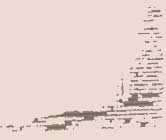|
Ancient rampart & Talipach gate
The true subjects of curiosity in Bukhara are fortified walls and gates. A section of the city wall with huge breaches in the brickwork constitutes a unique monument of Uzbekistan's fortification architecture. It is also an important element in the historical topography of the city, one that is closely associated with the history of Bukhara. Narshakhi, the tenth-century author of "History of Bukhara" wrote that the first walls around the shakhristan in Bukhara had been built in the 8th century, during the reign of the Tahirids, who was the Arab satraps.
The territory of the prospering city grew and in 849-50 A.D. new walls were erected to encompass the Ark citadel and the shakhristan. Towards the 12th century, under the reign of Arslan-khan of the Karakhanid dynasty, the walls were reinforced by adobe clay fortifications (1102-1130).
Another wall of baked brick was built around Bukhara in 1164-65 under the reign of Ma'sud Klich Tamgach-khan. Both ramparts were renewed in 1207-08 under Khorezrnshakh Muhammed. However, in 1220 they were destroyed during the invasion of the Mongol hordes of Ghenghiz-khan.
Then ensued a period of stagnation and the territory of Bukhara shrank.
There are ancient manuscripts that testify the city's revival towards the middle of the 13th century. At this moment were constructed two large Madrasahs - Masudiye and Khaniye. Al-Bakuvi (a fifteenth-century author) reports on two fortification rings around Bukhara: the external one embracing area of 5184 square km and the internal one circling the Ark citadel on an area of 36 square km. The author stresses, "... and within this space there is not a single plot of waste land or ruined building."
The next ring of fortifications surrounded the suburbs in the period from 1540 to 1549 under Abd al-Aziz-khan the first.
Researchers identify the names of eleven of the city gates (five of which were located in the extant area of the wall). Only two of them that was built towards the close of the 16th century are intact now:
Talipach gate in the north and
Karakul gate in the south-west. The Sheikh Djalal gate in the south has disappeared only recently.
Talipach gate
The ring of fortifications surrounded the suburbs in the period from 1540 to 1549 under Abd al-Aziz-khan the first.
Researchers identify the names of eleven of the city gates (five of which were located in the
extant area of the wall). Only two of them that was built towards the close of the 16th century are intact now: Talipach gate in the north and Karakul gate in the south-west. The Sheikh Djalal gate in the south has disappeared only recently.
Karakul gate
The ring of fortifications surrounded the suburbs in the period from 1540 to 1549 under Abd al-Aziz-khan the first. Researchers identify the names of eleven of the city gates (five of which were located in the
extant area of the wall). Only two of them that was built towards the close of the 16th century are intact now: Talipach gate in the north and Karakul gate in the south-west. The Sheikh Djalal gate in the south has disappeared only recently.
Dmitriy Page
Sources
|









